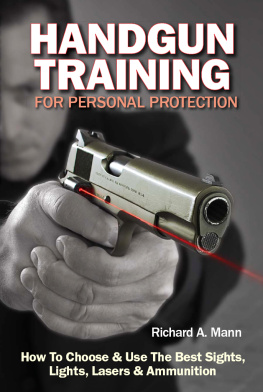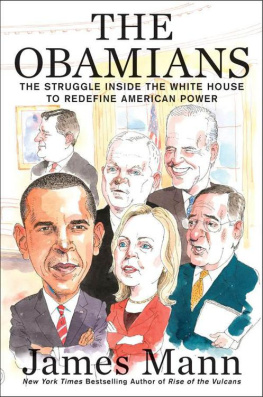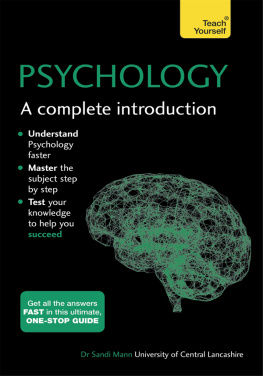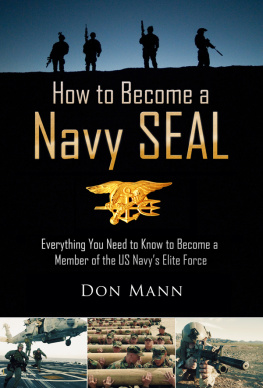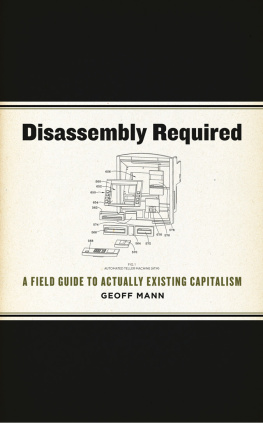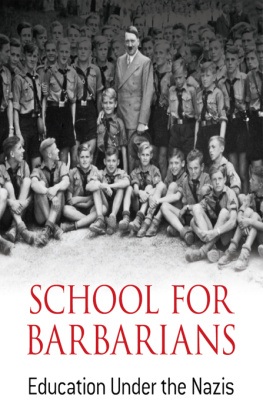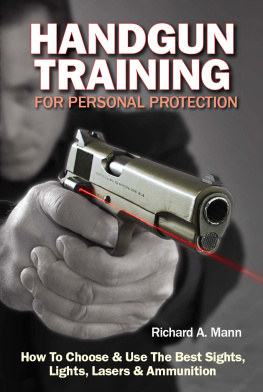Thank you for purchasing this Gun Digest eBook.
Sign up for our newsletter and receive special offers, access to free content, and information on the latest new releases and must-have firearms resources! Plus, receive a coupon code to use on your first purchase from GunDigestStore.com for signing up.
or visit us online to sign up at
http://gundigest.com/ebook-promo
Dedication
For Jeff
May we all one day ride, shoot straight,
and speak the truth.

Photo courtesy of Gunsite Academy
A portion of the profits from this book will be donated
to the Jeff Cooper Legacy Foundation.
Introduction
The most lethal weapon on our planet is the human brain. It has given us the knife, the pistol, the atomic bomb, and the politician.
I ts thought that the first handgun was invented about 600 years ago. In the late 1800s, Samuel Colt used his brain to create what was arguably the first perfection of the defensive handgun, and in the early 1900s, John Browning further refined this tool. One hundred years later, Brownings 1911 remains one of the most popular handguns in the world, but it could be said that Gaston Glock brought the pistol into the new millennium and set the stage for what is the modern handgun.
Just as the handgun has evolved, so too has the way it is used. Methods of shooting a handgun in a defensive situation have evolved and continue to do so. Men like Ed McGivern, Rex Applegate, Bill Jordan, and others have drastically impacted the way we carry, train, and shoot handguns. Colonel Jeff Cooper has undoubtedly had the greatest influence on defensive pistol shooting. His legacy lives on through the Gunsite Academy and through hundreds of defensive handgun instructors worldwide. As Sheriff Jim Wilson has said, Theres no telling how many lives the teachings of Col. Cooper have saved.
But our brains never stop working to make things better. In the last 20 years, we have seen further advancement in every aspect of the defensive handgun. Defensive handgun ammunition has drastically improved, handgun-mounted lasers and lights have become extremely compact and offer instinctive activation and, thanks to men like Wayne Novak and Ashley Emerson, handgun sights have improved, too.
Savvy instructors have also improved the way we train to fight with a handgun by building on the foundations laid by McGivern, Applegate, Jordan, and Cooper. But, what we have not seen, is a dedicated effort to include the accessories associated with the modern handgunlike the many lasers, lights, express sights, and ammunition availableinto training doctrines. Is this a necessary consideration? Damn straight! With millions of shooters using these new tools, the exclusion of training on how to properly apply them is not just irresponsible, its recklessly negligent.
Within these pages, youll find information to help you understand the modern defensive handgun and the modern sights, lights, and lasers that commonly accessorize it. You will also find what may be the first truly practical look at selecting and categorizing defensive handgun ammunition. No, youll not find another numerical formula that rates one load or cartridge three points better than another. Youll see realistically objective comparisons. Maybe even more importantly, you will be provided with guidance on the practical application of the modern handgun, as well as training drills and techniques that will teach you how to use it to save your life.
None of this is rocket science, and the complete understanding of this book will not make you a super ninja, a tactical warrior, or a Jedi firearms instructor. The methods and techniques contained herein are nothing more than a common-sense approach to solving problems. The crux is that these problems do exist, and you can expect to face in the real world. By its most simplistic definition, this book is the melding of the modern technique of the pistol with the modern defensive handgun and its accessories.
It should be understood this is not a beginners book. You will not find information here on the various kinds of handguns or how they work. Countless other books are available on that subject, and the owners manual for your handgun will cover how to operate your specific firearm. Just the same, you will be not bombarded with opinions from me that deal with which handgun I think is best. I do have opinions and Im sure theyll shine through, but, from a practical standpoint, as long as you have a serviceable handgun that is reliable, you can use it to learn the techniques contained herein. What you can do with your handgun is and will always be more important than who made it, what type it is, or whether I or some other so-called expert likes it.
Ideally, this book has been written for someone who has purchased a pistol for personal protection and concealed carry and who as attended and completed the necessary training requirements to obtain a concealed carry permit. It is appropriately configured for the person who is familiar with the basic operation of their handgun, but might have not received any formal instruction on how to practically apply it to save their life.
The truth is, when it comes to firearms training, at any level, there is no replacement for a savvy instructor, a well-equipped shooting range, and an eager student. Good, patient instructors are not in great abundance, and those who are do not work for free. Marksmanship is a discipline and cannot be taught by someone you are not temporarily willing to submit control of yourself to. Husbands and boyfriends, for instance, are notoriously bad firearms instructors, only because of the delicate and complex interpersonal relationships that can exist between a man and a woman. Mothers and fathers can be moderately successful at teaching their offspring to shoot, but there is most often a point where diminishing returns are met. Again, it is the dynamics of familiarity that make the instructional process difficult.
In a perfect world, firearms would be taught to all civilians in our public schools. As farfetched as this might seem, when I was in seventh grade, we were all required to take the hunters safety course, we all shot trap on the school baseball field, and we all reloaded shotgun shells in the school gym. Sadly, that was another time and, obviously, this world is far from perfect.
This leaves the law-abiding civilian with a couple choices, when it comes to their education of personal protection with a defensive handgun. They can head off to a reputable school like Gunsite and learn a proven technique from master level instructors; they say the best lessons in life are free, but free lessons tend to be learned the hard way and not at your convenience. Youll pay for what you learn at Gunsite, and it will be well worth the coin.
The law-abiding citizen can also seek out some local practitioner and hope they have not thrown in with some tactard. This is generally much more affordable, but with this financial convenience comes the unknown componentwill you learn anything of value? In the last decade, countless shooting schools have cropped up all over. In most cases they are operated by qualified and experienced folks, but qualifications and experience do not always guarantee quality instruction.

